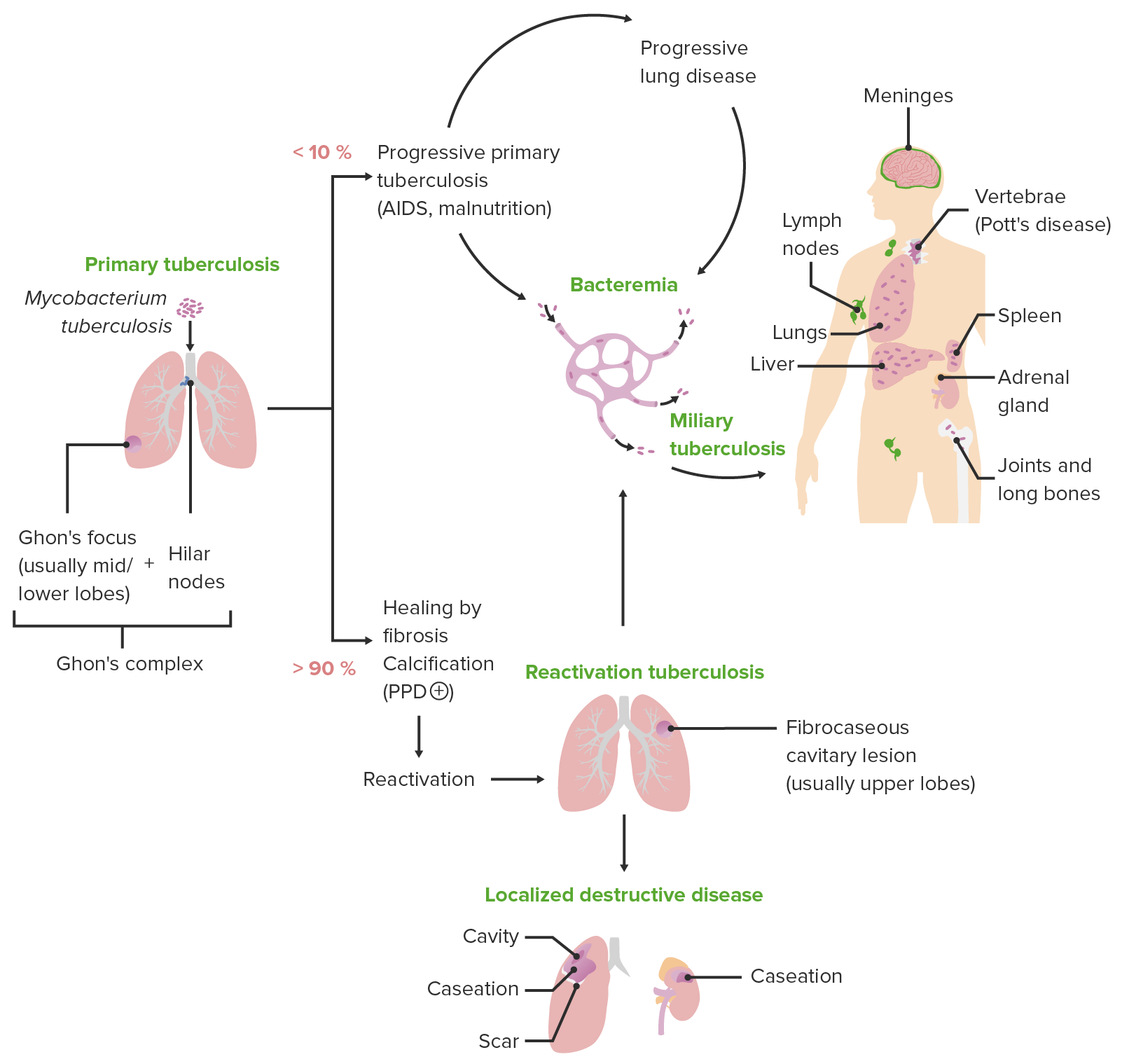Playlist
Show Playlist
Hide Playlist
Tuberculosis: Summary
-
Slides 02 InfluenzaATuberculosis RespiratoryAdvanced.pdf
-
Download Lecture Overview
00:01 So to summarize the main learning points of this lecture. Tuberculosis is caused by the slow growing intracellular pathogen called Mycobacterium tuberculosis. And the risk of having tuberculosis as a disease is dictated by the country you grew up in, because it’s depending on how prevalent the people are around you with tuberculosis. Most infection is latent disease but that does reactivate in 10% of people to cause active infection. TB can infect almost any organ, but half of the cases are of pulmonary tuberculosis, about half and about 40% are extrapulmonary with 10% having mixed disease. Diagnosis requires either seeing the microorganism or culturing it from a sample obtained from the site of infection, sputum culture for patients with lung disease. 00:52 Treatment is straightforward in that it just requires antibiotics, but is complex in that because you require 4 drugs for 2 months and then continuing 2 of those drugs for a further 4 months. So it’s a very prolonged treatment course and compliance is one of the big issues to ensure that the patient actually takes those drugs for that period of time. As well as compliance, the drugs can be liver toxic, and there are other side effects that can occur with the drugs which make treatment more complicated. Resistance can be a major problem, fortunately, it’s relatively rare in the West but if you do have a resistant organism then that makes the disease much more complicated to treat. If you have non-resistant disease, we expect to cure 95% of patients with tuberculosis due to non-resistant MTB should be cured. 01:41 Thank you for listening.
About the Lecture
The lecture Tuberculosis: Summary by Jeremy Brown, PhD, MRCP(UK), MBBS is from the course Infections of the Respiratory Tract.
Included Quiz Questions
Which of the following statements about the treatment of active tuberculosis is TRUE?
- The shortest recommended period of treatment is 6 months.
- Most patients can be treated successfully with 1–2 drugs.
- Cure is unusual.
- Compliance monitoring is not mandatory.
What is the approximate cure rate of drug-susceptible tuberculosis?
- 90%–95%
- 70%–75%
- 40%–45%
- 20%–25%
- 30%–35%
Customer reviews
4,5 of 5 stars
| 5 Stars |
|
1 |
| 4 Stars |
|
1 |
| 3 Stars |
|
0 |
| 2 Stars |
|
0 |
| 1 Star |
|
0 |
this was clear to understand, while being informative. just wished they went over CXR findings a bit more
the test sometimes is not related to the presented lecture




